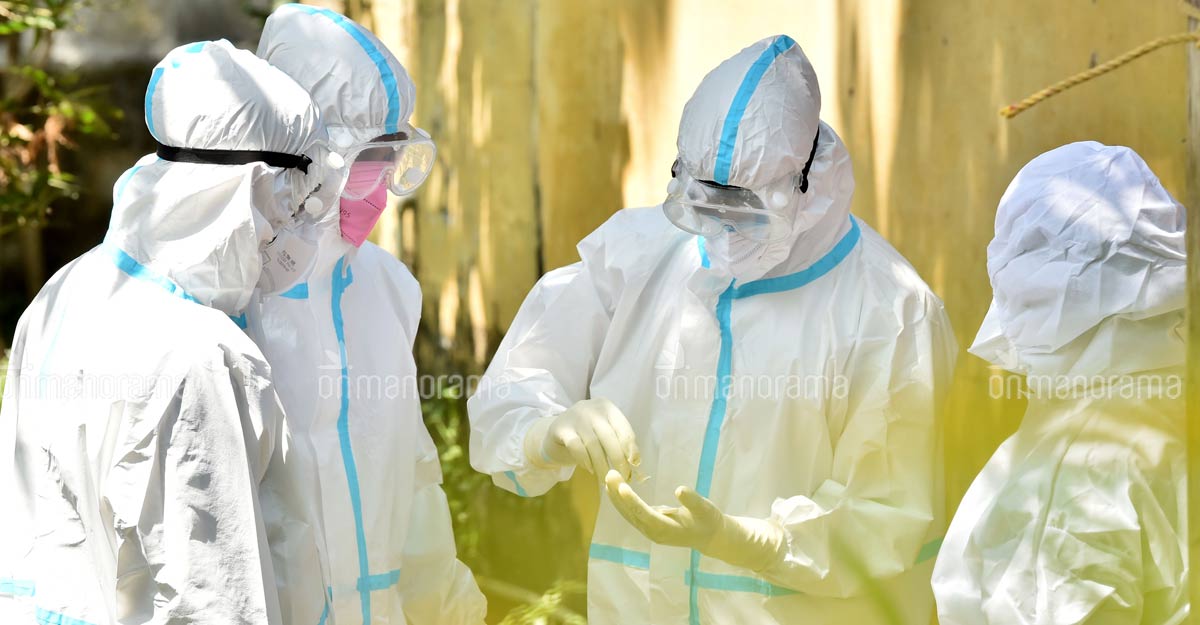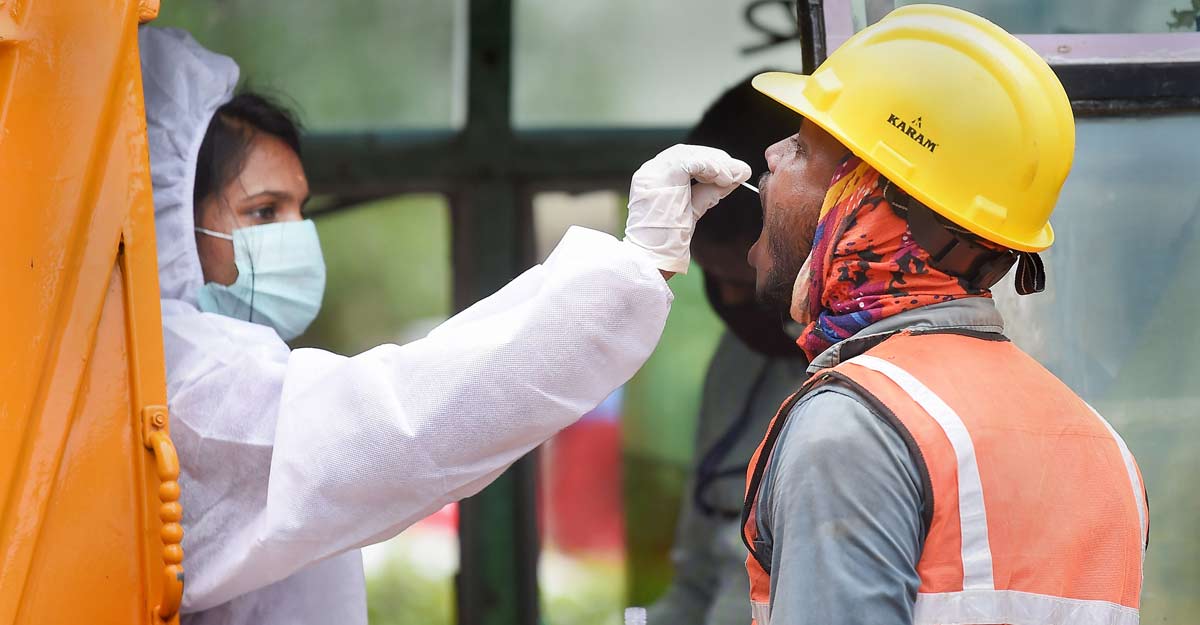Long COVID: the symptoms are vague, but the suffering is real
Mail This Article
A significant number of people who recovered from SARS-CoV2 infection are reporting symptoms such as tiredness, headache, shortness of breath, cough and chest pain. This is collectively referred to as long COVID, but the topic requires further study and classification. This article discusses a few common questions about long COVID.
How many people get it?
Conservative estimates state that about 10% of people with COVID-19 go on to develop long COVID. However, in an Italian study of 179 patients discharged from hospital after moderate to severe COVID-19, 87% had at least one symptom at 2 months, and 55% reported three or more symptoms. In this series, fatigue was reported in 53.1%, breathlessness in 43.4%, joint pain in 27.3% and chest pain in 21.7%.
Is recovery possible?
Published studies indicate that about 80% of these patients will recover by 3 months. However, this information is subject to change once larger studies are completed.
What are the symptoms?

The commonest symptom is fatigue or excessive tiredness. People who were previously physically fit may find that they could barely get out of bed after COVID-19. Dr Nasreen Alwan, a young doctor from the UK says that she even had difficulty opening the freezer and loading the dishwasher. The intensity of symptoms wax and wane; in other words there are good days and bad days. Symptoms are also known to shift from one system to the other.
Other symptoms include chest tightness and ill-defined intermittent breathing difficulty which some patients have termed ‘lung-burn’, difficulty focusing referred to as ‘brain-fog’, fever, anosmia, headache and limb or joint pains.
Why do people develop long COVID?
Unlike other common viral respiratory infections, COVID-19 is a multisystem illness. Although the vast majority of patients get better in about ten days with only mild symptoms pertaining to the respiratory tract, a few people go on to develop involvement of other organs such as brain, heart, kidneys, gut, joints and skin.
It is believed that the extraordinary immune response mounted by the body to thwart the virus is responsible for the wide variety of long COVID symptoms.
Who is at greater risk for long COVID?
Although women have lower chance of dying from COVID-19, they are at greater risk of developing long COVID. It is noteworthy that chronic painful conditions such as fibromyalgia are more common among women. Obese and older people are also at greater risk for long COVID.
A study from King’s College, London has found that patients who have multiple symptoms, and those who produce larger amounts of antibodies during COVID-19 are more likely to go on to develop long COVID. The exact mechanism will be elucidated with time.
Are there different types of long COVID?
At this time, knowledge is evolving—and it is too early to place things in boxes yet. After excluding unrelated conditions, broadly, two categories of people have symptoms consistent with long COVID. The first is those who had severe COVID-19 and therefore, take longer to recover from organ damage, debility and malnutrition. The second category--and the majority—are those who were previously healthy and only had a mild COVID-19 illness, but went on to develop long-term symptoms as described above.
Does COVID-19 affect the heart?
There are conflicting views about the extent of heart disease that occurs in COVID-19. Heart involvement could occur as a result of clots developing in the coronary arteries, inflammation of the heart muscle or of the layers surrounding the heart. Rhythm disturbances have also been described. Dr Valentina Puntmann and others from Frankfurt, Germany showed that a significant number of patients who recovered from mild COVID-19 had MRI evidence of cardiac involvement, while compared to healthy controls.
What are the treatment options?
At this time, it is believed that most patients with long COVID will eventually recover on their own. There is no medication that is universally recommended. It is however, important to distinguish those who have specific conditions such as lung fibrosis, heart disease, venous thrombosis, post traumatic stress or depression and treat accordingly.
Healthcare providers need to be empathetic and listen to the patient, reassuring them that they will improve. Being supportive and offering follow ups are helpful. Breathing exercises which involve retraining of respiratory muscles are useful for those who have shortness of breath.
Where relevant, referral for occupational therapy and physiotherapy will be helpful. One of the most effective options is to refer to or encourage the formation of support groups where patients can counsel one another about what to expect. This strategy has been found to be helpful in chronic ailments including lupus, Crohn’s disease and hemophilia.
The human body is susceptible to multiple diseases which have no relation to COVID-19. When someone who has recovered from COVID-19 visits a doctor with symptoms, it is important to systematically rule out unrelated illnesses such as diabetes, vitamin D deficiency, hypothyroidism, anemia, tuberculosis or even malignancy. Re-infection from the same virus must also be kept in mind. In other words, the tendency to attribute all symptoms to post COVID must be guarded against.
Do people underestimate COVID-19?
COVID-19 is often taken lightly by many individuals all around the world. This is particularly common among people of younger age groups who are aware that their age-specific mortality risk is substantially lower than the elderly. While there is no real need to be fearful of the illness, it is important not to be aggressive about resuming prior levels of exercise after recovering. “Don’t try to dominate this virus” warns Prof. Paul Garner of Liverpool School of Tropical Medicine, UK, who suffered from long COVID. This could be a problem among fitness enthusiasts who overestimate their body’s healing powers. Professional athletes are advised to take sufficient rest before slowly ramping up their activities. The sudden death of 27-year-old Micheal Ojo, the 7 ft 1 inch Florida basketball player as he resumed training following mild COVID-19 has been a case in point.
Is long COVID being exaggerated?

Patients who suffer from long COVID sometimes feel that they are not taken seriously by their family, employers or healthcare providers. The reasons for this apparent neglect are several. The foremost is perhaps that COVID-19 by itself is incompletely understood, and post-COVID has not entered the medical text books yet. A healthcare provider who has no prior exposure to such an illness might not always be willing to validate the concerns raised by the patient, and may dismiss the symptoms as trivial.
Lack of empathy and perceived neglect is a common problem faced by those who suffer from ailments such as fibromyalgia, depression, irritable bowel syndrome and chronic back pain. There are no blood tests or X-rays that can diagnose these conditions. There is in fact, no lab test that can confirm or quantify the pain reported by a patient. As a result, these patients face a significant amount of scepticism from society even though their symptoms are real. Unfortunately, there is a subset of individuals who exploit the system by falsely claiming to have symptoms, in order to receive paid time off, as well as claim undeserving disability benefits.
Physical de-conditioning is underestimated among those who have COVID-19. Bed rest of a few days can rapidly diminish muscle bulk and strength even among young and fit individuals. This could get misinterpreted as long COVID. Anxiety from repeated exposure to scary news in media, economic distress, fear of losing employment, depression, bereavement and loneliness could manifest with physical symptoms that fit the apparent description of long COVID.
In the long run, those who have job security and savings might be able to survive long COVID without significant financial setback. However, among the economically disadvantaged sections of society who cannot afford sick days off work, the impact of long COVID is likely to be severe.
Further reading
Long covid could be four different syndromes: BMJ 14 October
Living with Covid19: NIHR review, 15 October
Pandemic threatens primary care for long term conditions: BMJ 5 October
Persistent symptoms in patients after acute COVID-19: JAMA July 9, 2020
Attributes and predictors of Long-COVID
Long COVID patients’ support group
(The author is a senior Consultant Gastroenterologist and Deputy Medical Director, Sunrise Group of Hospitals. He is also the president of the Indian Medical Association, Cochin.)



